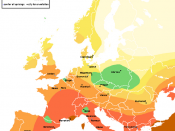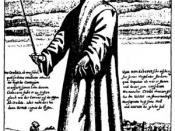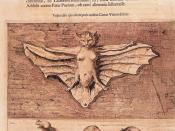The Bubonic Plague which struck Europe in the 14th through 16th centurys nearly brought life to a virtual standstill.
In October 1347, two months after the fall of Calais, Genoese trading ships put into the harbor of Messina in Sicily with dead and dying men at the oars. The ships had come from the Black Sea port of Caffa (now Feodosiya) in the Crimea, where the Genoese maintained a trading post. The diseased sailors showed strange black swellings about the size of an egg or an apple in the armpits and groin. The swellings oozed blood and pus and were followed by spreading boils and black blotches on the skin from internal bleeding. The sick suffered severe pain and died quickly within five days of the first symptoms. As the disease spread, other symptoms of continuous fever and spitting of blood appeared instead of the swellings or buboes. These victims coughed and sweated heavily and died even more quickly, within three days or less, sometimes in 24 hours.
In both types everything that issued from the body- breath, sweat, blood from the buboes and lungs, bloody urine, and blood-blackened excrement- smelled foul. Depression and despair accompanied the physical symptoms, and before the end "death is seen seated on the face."
The disease was bubonic plague, present in two forms: one that infected the bloodstream, causing the buboes and internal bleeding, and was spread by contact; and a second, more virulent pneumonic type that infected the lungs and was spread by respiratory infection. The presence of both at once caused the high mortality and speed of contagion. So lethal was the disease that cases were known of persons going to bed well and dying before they woke, of doctors catching the illness at a bedside and dying before the patient. So...


